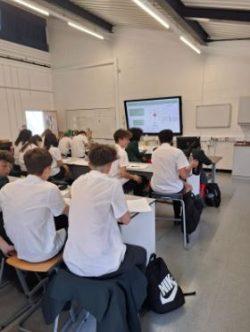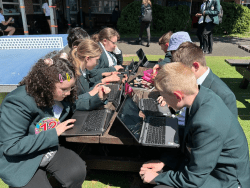Key Stage 3 Student of the week
Name: Emilia House: 7 ASh Reason for nomination: Fantastic behaviour and attitude to learning. Behaviour: Emilia has received 19 reward points this...
Filter by Category
Filter by Author

























































































































































































Name: Emilia House: 7 ASh Reason for nomination: Fantastic behaviour and attitude to learning. Behaviour: Emilia has received 19 reward points this...
Posted by Daniel Mitman

Name: Layla House: 10 Oak Reason for nomination: The combination of high attendance, excellent attitude to learning and the number of positive rewards gained....
Posted by Daniel Mitman

Year 10 were learning about atomic theory in their first lesson on Radioactivity. First some history about how our models evolved. Next some work on...
Posted by admin

This week has been Mental Health Awareness Week. Our Student Mental Health Ambassadors have put on a range of activities to get students talking and to raise awareness of Mental...
Posted by Tracy Greenwood
At Bushey Meads School, kindness is more than just a value, it’s a way of life. We are proud to foster a culture where students are encouraged to look out for one another and...
Posted by admin

We are thrilled to announce an exciting upcoming Rewards Trip for students who have demonstrated outstanding commitment and excellence throughout the school year! This special...
Posted by Lucy Joannou

At Bushey Meads, the English faculty has recently been trialing Sparx Reader, an innovative tool designed to engage students with reading and promote a love for books. The results...
Posted by Anthony Carter
This week, our Year 9 students took part in their first set of core subject exams under full exam conditions in the Sportshall. They sat their English exam on Monday, followed by...
Posted by Mo Abusef
Posted by admin
This week across Bushey Meads, the pastoral team have been working hard to develop student understanding around our values of Respect and Responsibility—two values that sit at...
Posted by Daniel Mitman

Name: Emilia
House: 7 ASh
Reason for nomination: Fantastic behaviour and attitude to learning.
Behaviour: Emilia has received 19 reward points this last week compared to a school average of 5 per week. Emelia has also been awarded 381 positive points so far this academic year compared to a school average of 179 – a great year so far!
Attendance: Emilia has a very good attendance record, with 94% attendance this year.
Well done Emilia – a true role model!

Name: James R House: Ash Reason for nomination: For demonstrating outstanding resilience and making a significant improvement in his attendance since the start of...

Jack – 12Beech Very respectful, participating well in CDC activities and very successful Kindness Matters program. Well done for a successful start of Sixth Form!